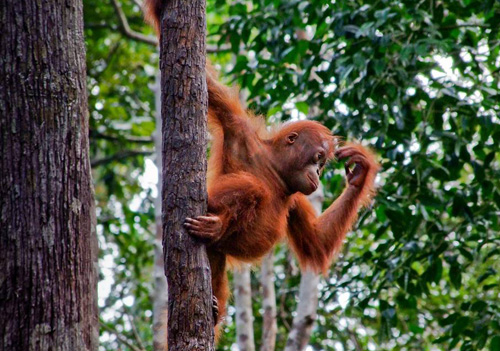
The Forest Stewardship Council (FSC) is a bit like a family, and its General Assembly — which just convened and is held every three years — is like a big holiday dinner with all your relatives. (See my video from the meeting.)
It’s something that you want to join despite the fact that you could do without the predictable opinions of that one distant relative. You know it may be messy, but you also wouldn’t want to miss it and you even look forward to the next one. (And, thankfully, that’s a few years down the road, anyhow.)
Let me explain.
From the boreal forests of Canada to the tropical forests of Borneo, the FSC is the standard for good forest management. FSC certification has become a globally recognized indicator that a product’s wood comes from a forest that has been managed to protect social, environmental and economic needs.
Protecting that balance is crucial in the global marketplace, where “sustainability” is becoming an increasingly important buzzword. It’s why the FSC tree-and-checkmark logo is popping up on furniture, decking material, copy paper and even diapers.
The FSC is not your normal organization with a well-oiled and hierarchical decision-making machine. Rather, the Board of Directors, the membership, issue-based working groups and every other entity or process associated with the FSC seeks balanced representation from the economic, social and environmental communities. These groups must also include representation from both the “north” and the “south,” or from both developed and developing economies. In other words, the FSC is designed to ensure that the interests and perspectives of its diverse stakeholders are adequately considered at every step of the process.
Is this slow, cumbersome, complicated, frustrating and contentious? Yes, at times. Is it necessary? Absolutely. It works for two principle reasons.
The first is that while people may not approach many of the issues from the same perspective, they are in pursuit of a shared objective — forest management that adequately balances multiple values — and know that they must find ways to make things work to achieve the greatest good.
The second reason? Generally speaking, the members respect, are impressed by and often even admire each other.
This year’s General Assembly was held in Kota Kinabalu from June 25th to July 1st. Kota Kinabalu lies in the state of Sabah, located on Malaysian Borneo, and it was a strategic choice.
Sabah has a 40-year-history of bad forest management, which the charismatic Director General of the Sabah Forestry Department (SFD), Sam Mannan, openly admits. But it also has the world’s first FSC-certified lowland tropical forest, the Deramakot Forest Reserve, and it has committed to bringing all of its forests under independent third-party certification by 2014.
Just last week, the SFD and FSC announced the certification of another 300,000 hectares of prime habitat for orangutans and pygmy elephants, as well as hundreds of lesser known species comprising Borneo’s rich biological wealth. This means that the forest will continue to generate timber to feed an increasingly hungry global market, but will also preserve the other values that lie within.
That’s the type of balance that FSC seeks to achieve. And it is through the General Assembly, for all its controlled chaos, that the FSC will be able to get there.
(Image: Orangutan. Image credit:©TNC. Video: How was the Forest Stewardship Council’s recent General Assembly like a big family dinner? And how did it help save forests? The Conservancy’s Asia Pacific forest program director Jack Hurd has the answers. )